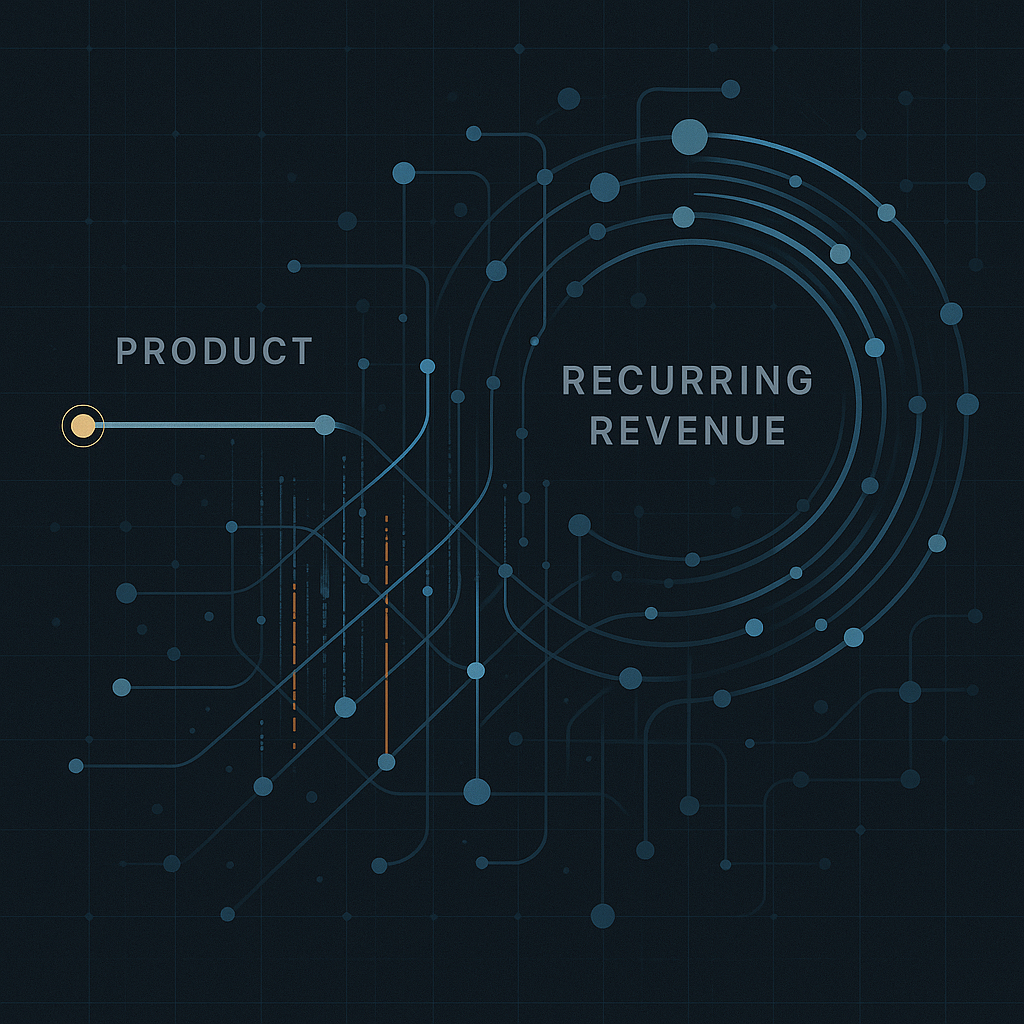
Table of Contents
A fundamental shift is underway in how businesses create value. Insights distilled from numerous complex system deployments indicate a transition away from a discrete, product-centric model to a continuous, customer-centric one. This is the Subscription Economy. It’s not just about recurring payments; it’s a wholesale re-architecting of the relationship between a company and its customers. But what does this mean for the enterprise systems that form the backbone of these organizations?
The Traditional Two-Pillar Architecture
For years, we’ve relied on two primary pillars: the Customer Relationship Management (CRM) system to manage customer interactions and the Enterprise Resource Planning (ERP) system to manage the financial and operational backend. In a traditional product economy, this works well enough. A sale is made, an invoice is generated, the product is delivered, and the transaction is largely complete. It’s a linear, one-and-done process. The CRM handles the ‘who,’ and the ERP handles the ‘what happened.’
However, the subscription model breaks this linear flow. The initial sale is just the beginning of a long-term, dynamic relationship. A customer might upgrade their plan, downgrade, add users, pause their subscription, or consume services based on usage. Each of these events has a direct and often complex financial implication. A perspective forged through years of navigating real-world enterprise integrations suggests that trying to manage this dynamic lifecycle with traditional tools is like trying to navigate a winding river with a map designed for a straight road.
Why Standard Systems Struggle
Why do standard systems struggle so much? Traditional ERPs were built to handle static, predictable transactions. They excel at managing a bill of materials or a fixed asset ledger. They were not, however, designed to manage the constant state of flux inherent in a subscription. Trying to customize a legacy ERP to handle prorations, co-termed subscriptions, and the specific revenue recognition demands of ASC 606 often results in a brittle, overly complex web of patches and workarounds. It becomes a technical debt nightmare.
Similarly, while a CRM like Salesforce is excellent at tracking the customer relationship and quoting initial deals (as explored in my analysis of Salesforce CPQ), it isn’t a billing or revenue system. It tracks the intent to subscribe, not the financial lifecycle of that subscription.
The Architectural Gap
This creates a significant architectural gap right in the middle of the most critical process for a modern business: the order-to-revenue lifecycle. You have a quote on the front end and a general ledger on the back end, but what happens in between? How do you translate a dynamic customer relationship into auditable, compliant revenue streams? This challenge requires a new kind of engine, one purpose-built not for products, but for customers.
Emerging Architecture Patterns
Forward-thinking organizations are addressing this gap through several emerging architectural patterns that reflect the unique demands of subscription-based business models.
The Subscription Management Layer represents perhaps the most critical innovation. This specialized layer sits between traditional CRM and ERP systems, serving as the authoritative source for subscription lifecycle management. Unlike traditional billing systems that generate invoices from static data, this layer maintains dynamic subscription states, handles complex pricing calculations, and orchestrates the entire customer revenue lifecycle.
Event-Driven Revenue Recognition has become essential for managing the temporal complexities of subscription revenue. Traditional accounting systems recognize revenue at the point of sale, but subscription models require sophisticated timing mechanisms that can handle performance obligations spread across multiple periods, contract modifications, and usage-based billing scenarios.
Customer Success Integration Points now represent a critical architectural requirement. In traditional product sales, customer interaction post-purchase was largely support-driven. The subscription economy demands proactive customer success management that directly impacts revenue retention and expansion. This requires tight integration between operational systems and customer health metrics.
Implementation Challenges and Solutions
Organizations implementing subscription-centric architectures consistently encounter several categories of challenges that require systematic attention.
Data Model Complexity emerges as the fundamental challenge. Subscription relationships create intricate webs of dependencies between customers, contracts, products, pricing, and billing cycles that traditional relational database designs struggle to accommodate. Modern implementations often adopt hybrid approaches combining traditional transactional systems with more flexible data models for subscription metadata.
Revenue Recognition Automation demands sophisticated business logic that can interpret contract terms, usage patterns, and service delivery milestones to determine appropriate revenue timing. Manual processes that worked for discrete product sales become unmanageable when scaled across thousands of dynamic subscription relationships.
Customer Lifecycle Orchestration requires coordination across multiple systems and business functions in ways that weren’t necessary in traditional product businesses. Sales, billing, customer success, finance, and operations must work from the same customer truth, requiring extensive integration and data synchronization capabilities.
Strategic Technology Decisions
The architectural choices organizations make in response to the subscription economy often determine their competitive positioning for years to come. Companies that successfully navigate this transition typically make deliberate decisions about where to invest in specialized solutions versus where to leverage existing capabilities.
The most successful implementations I’ve observed focus on creating clear boundaries between systems of record and systems of engagement, ensuring that each component in the architecture serves its intended purpose without unnecessary overlap or complexity.